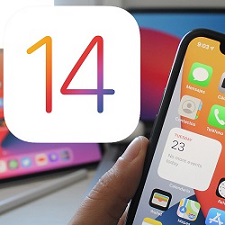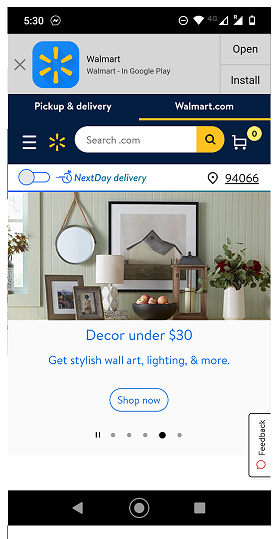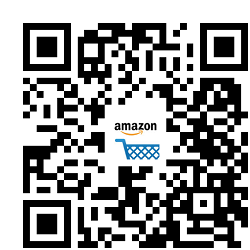
Done right, organic install strategies can be used to complement and even offset the losses expected from the paid media channel, while also lowering your overall cost per install rates. This is the perfect time to consider your options.
Here are a few strategies to consider:
Capture More Organic Installs with SEO-Friendly App Banners
The
That means if you're not serving an app banner at the top of your popular pages, you could be losing out on a massive opportunity to increase organic installs while reducing your overall cost per install rates.
Plus, while iOS 14 restricts your ability to attribute a user’s app install to ad impressions on third party ad networks, your own website and first party data give you more options. For example, you can learn which content and pages of your site drive the most impressions and app installs without relying on Apple's IDFA at all.
If you currently have app banners, make sure they are visible on all browsers across iOS and Android. Apple smart banners, for example, are not visible on Android devices, and many app banner solutions are not visible when your site is viewed by an embedded browser like those found in apps like Facebook, Instagram, or LinkedIn. This limited visibility hurts installs and velocity - important signals for app store rankings.
With paid installs set to become less effective, consider how an SEO-friendly app banner solution can create incremental growth.
Place Smarter App Store Links on All Your Digital Touchpoints
As your app installs decline from your paid ad channel, you will need new innovative linking strategies to promote your app from other channels. Rather than promote two separate URLs for Apple App Store and Google Play, you can be more efficient and promote a single, intelligent app store link that will route visitors to the right app store depending on the device clicking the link.
To increase organic installs with this method, identify your touchpoints that encounter both Android and iOS customers, and give customers a single intelligent link that gets to the right app store:
- Add these links to your company’s social profiles including Facebook, YouTube and Instagram
- Add these app store links to customer email communications
- Add them to your product packaging or physical store signage
- If you're running TV/video or radio/audio marketing campaigns, consider ways of displaying or mentioning a short link that your audience can type (or click) to install from their app store
The more accessible and familiar you make your app store link across different marketing channels, the more you can increase app discovery and organic app installs to make up for any loss in paid installs. You can also include direct attribution tags using the tools provided by Apple and Google.
Make Physical Touchpoints Drive More Installs with QR Codes
As
For examples of this, consider the ways Amazon uses QR codes in their holiday catalog to compel shoppers to install and use the app. Amazon’s catalog QR codes act as a shortcut to enable impulse shopping. As a shopper, you can scan the QR to access pricing (in the app), reviews, category-filtered pages, order history, live chat, etc. Thus the app advertises itself as a relevant, useful technology for the shopper, with the QR code providing a frictionless way to install and experience the app.
Following Amazon's lead, ask yourself and your mobile team:
- What capabilities does the app offer that are unique to you and/or are difficult to experience without your app?
- How can you make customers feel they are missing a vital experience unless they install your app?
- Are there opportunities where you could leverage print marketing, physical signage, or real world customer touchpoints to create desire to install your app?
This kind of experience marketing is where iOS 14 is taking you as a mobile marketer.
Will the transition to an app install ecosystem free of privacy-invasive tracking be easy? No, it will not. But it is an opportunity to future-proof your mobile growth strategies and win customers from the competition. Start by focusing on the organic opportunities in front you. Get started now while you still have time.
If you found this content helpful, check out some of our other popular how-to posts about linking to apps from different marketing channels:
- How to Generate a Single QR Code to Download an App from iOS App Store and Google Play
- Smarter App Install Banners: A Radically Easy Approach To Grow Organic App Installs
- How to Generate Links to Open Mobile Apps from Snapchat Ads and Stories
- How to Generate Links to Open Mobile Apps from YouTube Ads and Videos
- How To Generate Links to Open Mobile Apps from TikTok Ads and Profiles
- How to Generate Mobile App Links for Instagram Ads, Stories, and Profiles That Directly Open Your App
- How To Generate Links to Open Mobile Apps from Facebook Advertising
- How To Track App Downloads and Engagement with App Deep Links and Google Analytics UTM Tags
- How To Set Up Paid Search Campaigns with App Deep Linking
- iOS 14: Shift Focus to Organic App Install Strategies While You Have Time
- Smart App Banners for Mobile Websites
- How to Generate One Link to Both App Stores to Grow App Installs and Attribution Data
- Jewelry Television Strikes Gold with TV QR Code Strategy
- JibJab Increases App Downloads
- 3 Ways to Optimize URL Schemes to Maximize App Deep Linking Opportunities
- 5 Ways to Use QR Codes to Promote Finance Apps to Increase Installs, Engagement and Transactions
- How to Generate QR Codes that Open Healthcare Apps and Increase Patient Engagement
